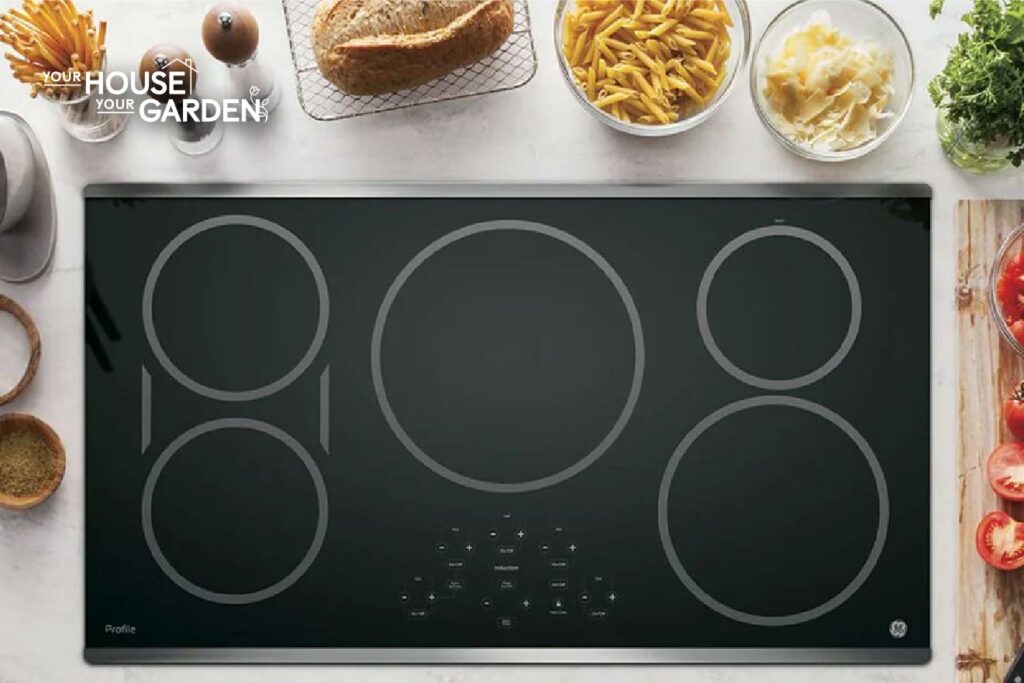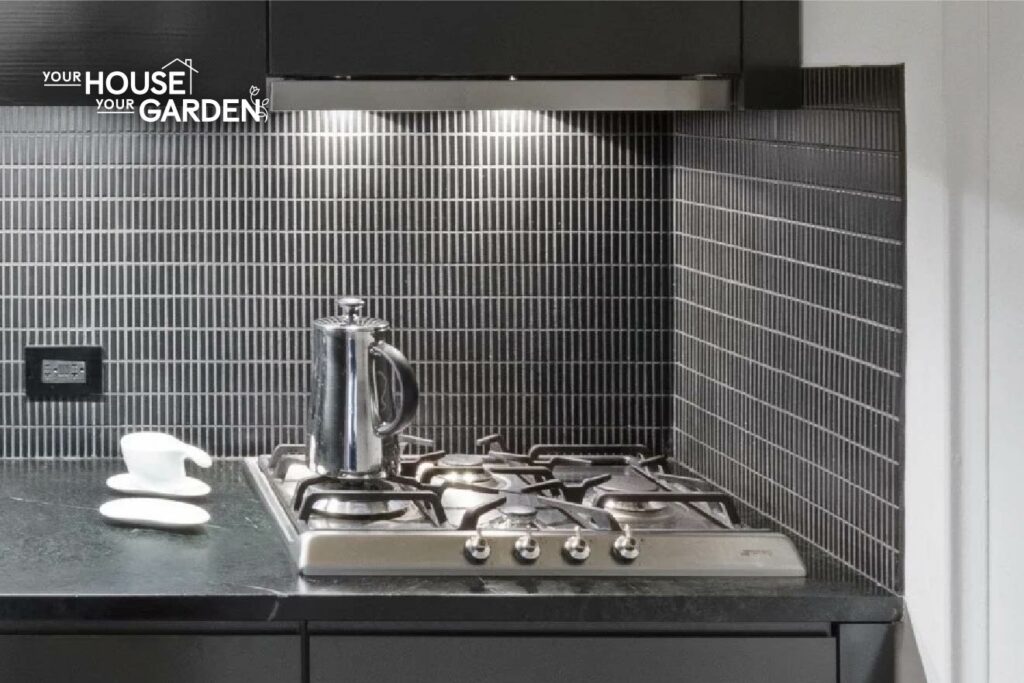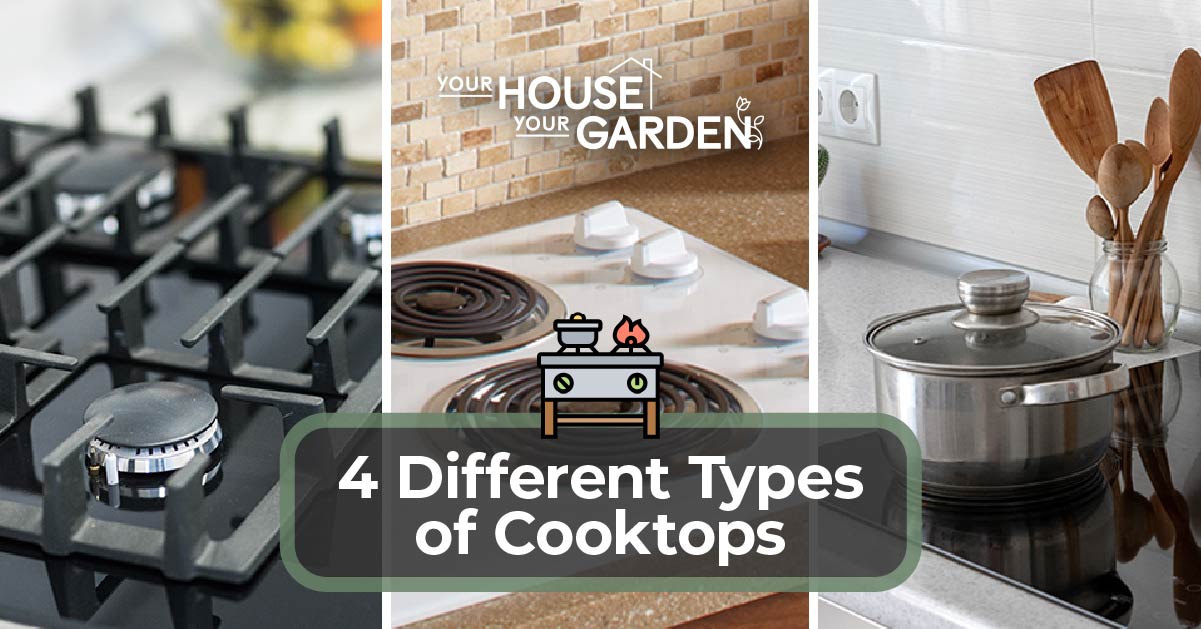There are four different types of cooktops to choose from—gas, electric, induction, and range top. Each has its own set of pros and cons that you’ll want to consider before making your final decision.
If you’re planning to buy a cooktop, there are many things to consider—size, safety, price, how long it lasts, and the cooktop types. If you’re considering getting one for your kitchen, it’s essential to carefully weigh the pros and cons to decide if this type of cooktop is right for you.
It’s also important to know the many different ways you can use a cooktop to gauge whether it’s the right kitchen appliance for you. For instance, you can decide whether you need a cooktop or a stovetop by understanding how they work.
This article will cover how each type of cooktop works to help you decide on the best one to buy for your kitchen.
Available types for a cooktop
Gas cooktop
Gas cooktops are the most common type as they are the most affordable and tend to be very easy to use. They use natural gas or propane as their fuel source.
Gas cooktops typically cost less to operate than electric cooktops, making them a more budget-friendly option in the long run.
This type of cooktop gives you more precise temperature control than electric cooktops, so it’s easier to achieve the exact results you want.
The biggest downside to gas cooktops is that they can be less energy-efficient than other options like the induction models.
Spills and splatters can also be more challenging to clean up on a gas cooktop than an electric cooktop because it typically has more nooks and crannies than electric and induction cooktops.
When using a gas cooktop, you will need enough ventilation in the kitchen. Gas cooktops produce carbon monoxide and other fumes that must be adequately ventilated to avoid health risks. This means that you’ll need to have a good range hood installed over your gas cooktop to clean the air in your kitchen.
Gas cooktops are available in various sizes and configurations to fit different kitchen layouts. They usually have four or five burners, although some models may have more or less. Gas cooktops can also come with various features, such as sealed burners, downdraft ventilation, and simmer settings.
Electric cooktop
An electric cooktop is one of the most common cooktops and uses radiant heat to cook food. It is usually powered by electricity but can also be powered by gas or induction.
Electric cooktops are usually more energy-efficient and easier to clean than gas cooktops. However, electric cooktops can be more expensive and take longer to heat up.
Induction cooktop
Induction cooktops are a newer option on the market. They use magnetic fields to heat food, which is very efficient. Induction cooktops can also be faster to heat up than other types, such as the electric cooktop.
Induction cooktops are more efficient than gas or electric cooktops because they use less energy. They also heat food more evenly and can reach higher temperatures.
However, induction cooktops can be more expensive than other options, such as gas cooktops. They may require induction-compatible cookware that is not as user-friendly—some people find them harder to use than gas and electric cooktops.
Rangetop
A range top is a cooktop that uses gas or electricity to heat food. It is similar to a stove, but it does not have an oven. Rangetops are often used in professional kitchens because they can reach very high temperatures quickly.
Rangetops have some advantages over other types of cooktops. They can reach higher temperatures than electric cooktops, so they are better for tasks like searing meat. They also offer more control over the cooking process than induction cooktops.
However, range tops can be more expensive than other cooktops, and they require ventilation because of the fumes they produce.
If you consider a new cooktop for your kitchen, a range top may be suitable. Be sure to compare the features and prices of different models before you decide.
Different ways to use a cooktop
Most people think of a cooktop as a surface for cooking food. However, there are many different ways to use a cooktop. Here are some of the most popular uses for this kitchen appliance:
Heating food: Cooktops can heat food quickly and evenly, handy for leftovers or frozen food.
Melting chocolate: Chocolate can be melted quickly and evenly on a cooktop. It is perfect for making chocolate sauce, chocolate fondue, or chocolate chips for baking.
Making popcorn: Popcorn can be made on a cooktop in minutes. All you need is a pot or pan with a tight-fitting lid.
Cooking eggs: Cooktops can be used to cook eggs perfectly—whether you like them scrambled, sunny-side up, or over easy.
Boiling water: Need to boil water quickly? A cooktop is a perfect tool for the job.
Sizes of cooktops
There are different sizes of cooktops, depending on the type.
Gas: The average dimensions of a gas cooktop is around 30 inches long by 20 inches wide, with a depth of about 12 inches. It usually has a capacity of five to six-burner stoves.
Electric: The average dimensions of a gas cooktop is around 30 inches long by 20 inches wide, with a depth of about 15 inches and a capacity of up to six-burner stoves.
Induction: The most common dimensions are 30 inches x 20 inches in length and width, respectively. The depth of an induction cooktop can vary, but they are typically about 4 inches deep. The capacity of an induction cooktop is measured in watts. The most common wattage for an induction cooktop is between 1,500 and 2,000 watts. However, some induction cooktops can go up to 3,000 watts.
Rangetop: Rangetops come in a variety of sizes. Most range tops are 30 inches wide, but some models may be as narrow as 20 inches. The depth of a range top varies from about 17 to 24 inches, and its average capacity is 4,300 watts.

Gas vs. electric cooktops
When choosing a cooktop for your kitchen, you may be wondering what the difference is between gas and electric models. Both have their own set of pros and cons that you’ll want to consider before deciding.
Gas cooktops are powered by natural gas piped into your home. They’re popular because they tend to be less expensive than electric cooktops, and they heat up more quickly. On the downside, gas cooktops can be less energy-efficient than electric models, and they require good ventilation to prevent fumes from building up in your kitchen.
Electric cooktops are powered by electricity supplied through your home’s electrical system. They’re often more expensive than gas cooktops but are more energy-efficient and don’t require good ventilation. Electric cooktops can take longer to heat up than gas models, but they typically have a more even cooking surface.
So which is the better choice for you? It depends on your needs and preferences. Consider the pros and cons of each type of cooktop before deciding.
What types of food can I cook on different cooktops?
Many different types of food can be cooked on cooktops—meats, vegetables, pasta, rice, and sweet treats.
Meats can be cooked using various methods, including frying, sautéing, and grilling.
Vegetables can also be cooked in several ways, including steaming and stir-frying.
Pasta, rice, and potatoes can be boiled or baked on cooktops.
Many specialty cooktops can be used to prepare various foods, such as pancakes, waffles, crepes, and pizzas.
Whatever type of food you want to cook, there is likely a cooktop that can accommodate your needs. The key is to know how to use your cooktop best to maximize this appliance’s versatility in the kitchen.
Criteria for the Best Cooktop Type
Here are the different factors to consider when choosing the best cooktop for your kitchen needs:
- Size and shape of your kitchen
- Budget
- Cooking preferences
The size of the cooktop is an important consideration. If you have a small kitchen, you may want to choose a compact cooktop that will fit into your space. It would help if you also considered the shape of your kitchen when selecting a cooktop. If you have a U-shaped kitchen, for example, you may want to choose a cooktop with multiple burners to use all of your counter space.
Your budget is another essential consideration when choosing a cooktop. There are many different cooktops available, from basic models to more expensive, professional-grade options. Choose the cooktop that fits your needs and budget.
Finally, consider your cooking preferences when selecting a cooktop. You may want a cooktop with multiple burners if you enjoy cooking large meals. If you prefer to cook smaller meals, you may want a compact cooktop with one or two burners. Consider your cooking habits and choose the cooktop that best suits your needs.
You can find the best cooktop for your needs by considering these factors. With the right cooktop, you can enjoy delicious meals while saving time and effort in the kitchen.
Cooktop and safety
Cooktops are generally safe to use when you follow the manufacturer’s instructions. However, there are some potential hazards associated with using a cooktop.
The most common hazard is burns. Cooktops can get very hot, and if you touch them, you can burn yourself. Be sure to keep your hands and other body parts away from the cooktop when it is in use.
Using a cooktop can also be a fire hazard. If you leave food cooking on the cooktop unattended, it can catch fire. Be sure to stay near the cooktop and keep an eye on the food that is cooking. If you live on your own, never leave the house with food cooking on the cooktop.

Cooktop and price
When shopping for a cooktop, it is crucial to consider the different factors affecting price. The size and type of cooktop and the features and brand can all play a role in determining the overall cost.
Smaller cooktops may be less expensive than larger ones, but they may also have fewer features. For example, a basic electric cooktop may cost less than a range top with multiple burners.
The type of material used in the cooktop can also affect the price. Stainless steel and glass cooktops are typically more expensive than other materials.
Finally, the brand name can also be a factor in the price of a cooktop. Some brands are more expensive than others, but they may also offer better quality or more features.
When considering all of these factors, it is possible to find a cooktop that fits your budget and needs. With a bit of research, you can find the perfect cooktop for your kitchen.
The lifespan of different cooktop types
Depending on the type of cooktop and how well it is cared for, its lifespan can vary greatly. Here’s a look at the average lifespan of different types of cooktops:
Gas cooktops: 10-15 years
Electric coil cooktops: 8-12 years
Electric smooth top cooktops: 12-15 years
Induction cooktops: 15+ years
Rangetop: 15+ years
Induction cooktops tend to have the most extended lifespan because they don’t rely on heating elements that can burn out over time. Gas cooktops also have a reasonably long lifespan, requiring more maintenance than induction or electric cooktops.
If you take good care of your cooktop, it will last longer. Be sure to clean it regularly and follow the manufacturer’s instructions. With proper care, even lower-end cooktops can have a long lifespan.
Cooktop types and food taste
The type of cooktop you use can significantly impact the taste of your food.
Many households have a gas cooktop because it can be very powerful, providing instant and consistent heat. It heats up quickly and provides even heat throughout the cooking surface, making it ideal for tasks requiring precise temperature control, such as simmering or sauteing.
Gas cooktops give food a smoky flavor, while electric cooktops make food taste blander.
Induction cooktops are great for evenly cooking food, but they sometimes make food taste more metallic.
Rangetop cooktops are the most versatile and can be used to create all sorts of flavors.
If you’re looking to change up the taste of your food, it might be worth experimenting with different cooktops. You may be surprised at how much of a difference they can make.

